Over the last few years, those looking for alternatives to standard exercise have found themselves presented with a growing number of choices, thanks to the increasing popularity of “boutique fitness.” A boutique fitness studio is, generally, a facility that focuses on group exercise in one or two nontraditional fitness areas. Although the businesses overviewed here are different, each business owner shares a genuine passion for his or her area of expertise and a desire to help interested participants get fit while having fun.
Vertex Climbing Center
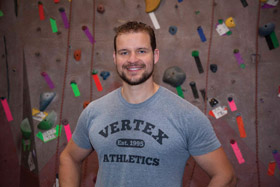 Vertex Climbing Center in Santa Rosa was founded in 1995 and, according to owner Gorden Cooley, it was one of the first climbing gyms in the Bay Area. It quickly became a hub for Sonoma County’s adventurous athletic community—mountain bikers and trail runners who had a taste for more extreme sports.
Vertex Climbing Center in Santa Rosa was founded in 1995 and, according to owner Gorden Cooley, it was one of the first climbing gyms in the Bay Area. It quickly became a hub for Sonoma County’s adventurous athletic community—mountain bikers and trail runners who had a taste for more extreme sports.
Cooley himself was a lifelong student athlete. Once out of college without any organized sport to participate in, he felt adrift. A friend took him to Vertex to try out rock climbing…and he was terrible at it. “A lot of athletes aren’t very good at rock climbing the first time they try it, because they try to exert too much force,” Cooley explains. “Whereas people who aren’t normally athletic are often more natural, because they’re able to relax and read the rock, versus trying to control it.“
Cooley quickly became obsessed with the activity; six years later, he purchased the gym. “We have a really strong climbing gym community now,“ he says. “It’s a tight-knit group.”
There are three types of indoor climbing. The first, called bouldering, is done on a low wall with no ropes, so every fall is a ground fall (Vertex has specially a padded floor). The second type, top rope climbing, involves taller walls, a rope anchored to the top of the climb and a partner, known as a belayer, who stays on the ground (who catches a climber in the event of a fall and lowers the climber to the ground when the climb is finished). The third style is called lead climbing, where the climber is tied in with their belayer and, as the climber advances, he or she clips in to the rock face.
According to Cooley, there’s not much to learn about rock climbing, aside from being certified in knots and belaying (exerting tension on a climber’s rope to stop their fall) and knowing how to fit a climbing harness. It doesn’t take much to be a proficient gym climber, the main barrier to entry is becoming belay certified. But with as little as an hour of instruction, anyone can learn how to belay. “We see grandparents belaying their grandchildren,” says Cooley. “There’s something for everyone in the world of climbing.”
Vertex offers many climbing options as well as general fitness classes, including beginning rock, climb time, basic safety, technique and movement, breath 101 and Bouldering Bettys (a community of female rock climbers pursuing impeccable skill, physical strength and power, and camaraderie through the sport of climbing); classes for beginners; it also offers private instruction. Climbing classes includes crack climbing 101, leading edge 1, gear and knots 101, anchors 101, technique and movement 2 and intro to multipitch. For fitness classes, Vertex offers personal training, group training, acro-yoga, aerial silks, yoga and Pilates.
Vertex also offers day-use prices, five- to 10-use punch cards, monthly and annual memberships. Cooley recommends a membership option if a person finds themselves coming to climb more than three times per month. “On the weekends we hold climbing birthday parties, which are one of Vertex’s longest running youth programs,” he adds.
According to Cooley, youth climbing is one of the most exciting elements of Vertex. “For kids, climbing is natural and they get strong quickly,” he says. “Many of our young athletes have competed on the national and international stage.
“We have climbing programs for kids of all ages and abilities, with our youngest group starting at 5 years old. Climbing is a great activity for kids. It improves hand-eye coordination teaches goal setting and builds strength.”
Cooley finds the social aspect of rock climbing to be the activity’s biggest benefit. “You’re in close proximity to so many other people and you have shared goals. It’s a great way to connect with people to share insight and knowledge—everyone wants to help each other.” Cooley also echoes the feeling of serenity many others have referenced when they become centered in an activity. “There’s a point where your movement and breathing gets in sync, things begin to flow and become easy. Kids adapt to climbing really well, but even I didn’t start climbing until I was 20. Our oldest members are well into their 70s. Climbing is a lifelong sport,” Cooley says. “It grows with you.”
Roco Dance and Fitness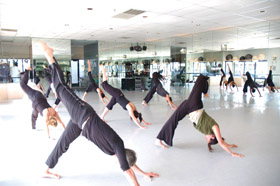
Annie Parr founded Roco Dance and Fitness in Mill Valley in 1993. Before starting the studio, Parr danced professionally with the Margaret Jenkins Dance Company in San Francisco. But when Parr was 25, her mother died; weeks later, Parr discovered she was pregnant. Although she had a bright future as a performer, Parr decided she “wasn’t going to be able to do that anymore.”
Soon after, a woman who taught fitness classes nearby was shutting down her business. Parr bought it, and Roco Dance was born. Now, details Parr, “We have two locations and conduct 250 dance classes per week. Our youth dance program serves around 800 to 900 kids per session.”
Roco offers a full curriculum of dance classes for all levels and ages. Youth classes include contemporary, ballet, jazz, break dancing, modern and hip hop. Adult fitness includes contemporary yoga, Pilates, essential flexibility and sculpting; dance classes include contemporary, ballet, Latin, jazz, samba fusion and West African, among others, with levels from beginning to pre-professional.
Always a lover of dance, Parr earned a bachelor of fine arts from New York University Tisch School of the Arts. She first taught dance to help supplement her income, but shortly discovered it came naturally to her. The facility currently has approximately 30 teachers on faculty from al over the Bay Area, and Parr finds her strongest instructors have an instinct they seem to be born with. “The best teachers have a natural ability and know how to engage a class,” she says. “They have a clear mind and present material in a way I, perhaps, hadn’t considered. Roco is surrounded by really creative and intelligent instructors.”
Adults can choose between single classes or class card packages (eight, 10 or 20 classes at a discounted price). Youth registration is by season (fall, spring and summer) and spans from four to four-and-a-half months in duration.
Parr noticed her students felt free to express themselves and socialize at Roco—that it was becoming a second home. “I’ve had many students say that when they go off to college, Roco is what they miss the most about home,” says Parr. “Dance is pretty unique. It’s very physical but it’s noncompetitive, so boys and girls can engage equally.” Parr says it doesn’t matter how skilled a student is, but rather, “I look for them to be engaged, enthusiastic and hungry. That’s all I ask for in a student.”
Cyclebar Novato
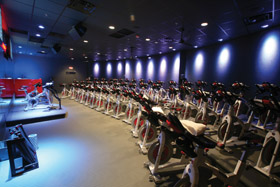 Cyclebar Novato, which opened in October 2016, is owned by Cindi King, Julie Kertzman and Stacey Agoustari, who have a friendship that goes back 20 years. They learned about the Cyclebar chain, which offers affordable indoor cycling classes, through friends. The partners loved it as an exercise form and, as they were no strangers to business or fitness, they decided to open the business as a group. Each of the women fit a niche that made the decision a fairly seamless process. King had previously worked as an attorney in corporate law, representing startups and nonprofits. Kertzman had worked in corporate marketing and Agoustari brought a background as a spin instructor (all three love to work out and keep fit).
Cyclebar Novato, which opened in October 2016, is owned by Cindi King, Julie Kertzman and Stacey Agoustari, who have a friendship that goes back 20 years. They learned about the Cyclebar chain, which offers affordable indoor cycling classes, through friends. The partners loved it as an exercise form and, as they were no strangers to business or fitness, they decided to open the business as a group. Each of the women fit a niche that made the decision a fairly seamless process. King had previously worked as an attorney in corporate law, representing startups and nonprofits. Kertzman had worked in corporate marketing and Agoustari brought a background as a spin instructor (all three love to work out and keep fit).
They traveled to Cyclebar’s home office in Cincinnati to learn about the business because, although there’s an external certification process to become a spin instructor, there’s also an internal training process. Once that was completed, Cyclebar representatives came to Novato and conducted a boot camp to train the new instructors.
Of their clientele, Kertzman observes, “Women tend to enjoy the social aspect of the class. They get to know a lot of people and develop a relationship with everyone, so it becomes about the community. It’s also very efficient. If you have kids, zipping in and out for just 50 minutes is an attractive workout option.”
Spinning is also growing in popularity among men, who often come after work to participate in races or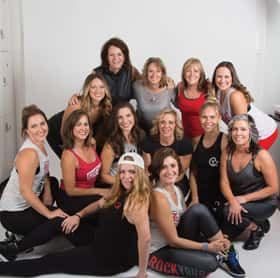 sprints. “What’s interesting about Novato is, a lot of couples come in, and then the men come back,” says King. “There’s a competitive aspect to it, as your stats can be posted on the board. It’s a very rigorous cardio workout as well, so there’s something for everyone.”
sprints. “What’s interesting about Novato is, a lot of couples come in, and then the men come back,” says King. “There’s a competitive aspect to it, as your stats can be posted on the board. It’s a very rigorous cardio workout as well, so there’s something for everyone.”
No membership is required for Cyclebar, which sells single rides or packages of multiple rides; participants reserve classes and bikes online. Two free introductory classes per week welcome beginners, and there are three types of regular classes. Performance classes are primarily driven by the bike stats, connect classes are taught to more internal effort cues, and classic classes that combine the two. Instructors create musical playlists and guide participants through a workout.
The owners stress participants can work at their own level in any class by adjusting their speed and wheel tension and deciding their own level of effort. “We’ve had people who come in saying they’d never really exercised before and the class changed their life,” says Kertzman. “They tell us they feel so much better and have so much more energy. People also feel the joy of gathering with friends and accomplishing common goals together. They support each other.”
Pure Barre Napa
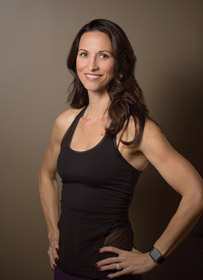 Nicolle Wagner became the owner of Pure Barre Napa in November 2016. She’d always been interested in health and fitness, then discovered the Pure Barre exercise regimen and, in her words, “fell in love with it.” Pure Barre is a total body workout that utilizes the ballet barre to perform small, isometric movements, which burn fat, sculpt muscles and create long, lean physiques. Pure Barre was founded by dancer, choreographer and fitness guru Carrie Rezabek Dorr. In July of 2009, Pure Barre became a franchise, with its headquarters in South Carolina.
Nicolle Wagner became the owner of Pure Barre Napa in November 2016. She’d always been interested in health and fitness, then discovered the Pure Barre exercise regimen and, in her words, “fell in love with it.” Pure Barre is a total body workout that utilizes the ballet barre to perform small, isometric movements, which burn fat, sculpt muscles and create long, lean physiques. Pure Barre was founded by dancer, choreographer and fitness guru Carrie Rezabek Dorr. In July of 2009, Pure Barre became a franchise, with its headquarters in South Carolina.
Wagner originally worked as a neonatal nurse at UCSF, before stopping to become a stay at home mom. Once her two sons were off to college, Wagner assumed she’d be returning to that career, but the prospect didn’t really appeal to her. “It took me up to two hours to get to work every day,” she says, “and then I worked 16-hour days. So the thought of going back to that schedule wasn’t the warmest feeling in the world.”
When she learned the previous owner of the Pure Barre studio in Napa wanted to sell, Wagner saw her chance.
The subtle intensity of a Pure Barre workout was what first appealed to Wagner. “Pure Barre targets certain muscles that don’t really get used in daily life,” she says. “I’ve been working out since I was 19, and I thought I knew what a workout felt like. I took one class and I wanted to crawl out of the studio. For me, I was hooked.”
There’s a corporate training process in which Pure Barre determines if you are ready to become an instructor. This ensures that every client gets the best workout no matter where they go. “I’ve taken quite a few classes but I know that when I go through training, I’ll still have no idea what I’m doing,” laughs Wagner. “I look forward to the challenge, though, of becoming an instructor.”
For anyone interested in trying a class, Wagner is insistent that those without any previous experience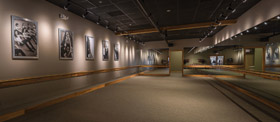 can participate. It is recommended to give the activity at least four classes, to understand the lingo and the flow of the class. Around the 10th class participants often have an “a-ha moment” where everything clicks into place. The class is very hands-on, so even if a client has injuries, instructors are able to offer modifications that let the client still get a good workout. “You can go in at any level. You just need to come in with an energetic mind and be ready to be challenged.”
can participate. It is recommended to give the activity at least four classes, to understand the lingo and the flow of the class. Around the 10th class participants often have an “a-ha moment” where everything clicks into place. The class is very hands-on, so even if a client has injuries, instructors are able to offer modifications that let the client still get a good workout. “You can go in at any level. You just need to come in with an energetic mind and be ready to be challenged.”
With five to seven classes per day, Pure Barre offers drop-in classes, a 10- or 20-pack of classes, a month-to-month option or a 12-month autopay contract. The Pure Barre technique is low-impact, protecting your joints by avoiding any bouncing or jumping. Each strength section of the workout is followed by a stretching section to create long, lean muscles without bulk and without exacerbating joint pain.
“People tell me that this class is their therapy,” says Wagner. “For 55 minutes, your brain calms down and you don’t think about anything but getting through the class. You don’t have time to worry about things. It really helps clear your mind.”
Wine Country CrossFit
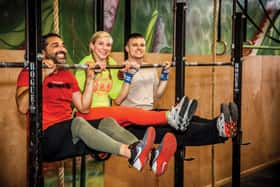 Today, most people have heard of the functional strength training known as CrossFit, but back in January 2009, when Beth Rypins opened Wine Country CrossFit in Napa, this method of conditioning the body wasn’t nearly as well known as it is today. “It started in our backyard in 2000 and then the gospel spread,” she says. “CrossFit is revolutionary because it’s the fastest way to build strength and make change in the body. With CrossFit, we use the movements from real life to condition the body as a whole, rather than isolating muscle groups like most folks do in a gym.”
Today, most people have heard of the functional strength training known as CrossFit, but back in January 2009, when Beth Rypins opened Wine Country CrossFit in Napa, this method of conditioning the body wasn’t nearly as well known as it is today. “It started in our backyard in 2000 and then the gospel spread,” she says. “CrossFit is revolutionary because it’s the fastest way to build strength and make change in the body. With CrossFit, we use the movements from real life to condition the body as a whole, rather than isolating muscle groups like most folks do in a gym.”
Rypins is a devoted athlete with a background in white water rafting and kayaking. Those sports took her around the globe, where she earned five national and two world championships titles. She discovered CrossFit in 2005 and hasn’t looked back since. “I’ve trained all my life and eventually I just got burnt out,” says Rypins. “But when I discovered CrossFit, I was completely re-inspired. “
There’s a standard process to become certified as a CrossFit trainer, but Rypins thinks it’s too easy. For example, to secure a level one trainer certificate, one only needs to attend a two-day course and pass the level one test in person. “In my opinion, you need a lot more training to understand how the body works,” says Rypins. “Becoming a good trainer takes years of practice.”
Wine Country CrossFit offers free introductory classes. There are monthly memberships available, and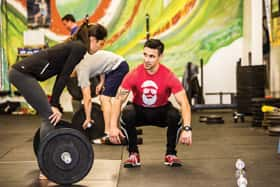 people who travel often use class cards. The software tracks your visits so there’s no need to carry an actual card. The Drop-In Fee is $20, and the 10 Class Card brings the fee down to $16 per class.
people who travel often use class cards. The software tracks your visits so there’s no need to carry an actual card. The Drop-In Fee is $20, and the 10 Class Card brings the fee down to $16 per class.
Wine Country CrossFit offers a host of classes including the On Ramp Series, which is the best way to learn the basic movements, Elements Classes, which are for those still learning about CrossFit, Level 1 Classes for those who are ready to rock and roll and really work hard, Cross Fit Kids, CrossFit Teens, and Boot Camp. The class structure is designed to inspire the beginning CrossFitter, and to challenge and reward the experienced athlete with impeccable strength and conditioning. "In addition to CrossFit we offer an Aerial Arts Program,” says Rypins. “Have you ever seen Cirque du Soleil? The aerial classes are like that, with all the spins, flips and drops.” For the Aerial Program there are three different levels offered, including a Conditioning and Flexibility Class.
Rypins enthusiastically describes the benefits CrossFit classes can have: “We’ve seen people lose up to 100 pounds, reverse their Type 2 diabetes, drop their cholesterol levels and have their vitality levels soar,” she details.
“CrossFit certainly turned back the clock for me,” she adds. “I feel great.”
Trapeze Pro…
 For those interested in learning the flying trapeze or other circus arts, Sonoma’s Trapeze Pro… has you covered. Owner Marek Kaszuba came to the Bay Area in 1996 after being raised and educated in Canada. “I used to have a corporate job as a theater manager with Cineplex Odeon in their corporate head office,” he says. “But in 1989, I got a job teaching sports at a Club Med family village in Mexico.”
For those interested in learning the flying trapeze or other circus arts, Sonoma’s Trapeze Pro… has you covered. Owner Marek Kaszuba came to the Bay Area in 1996 after being raised and educated in Canada. “I used to have a corporate job as a theater manager with Cineplex Odeon in their corporate head office,” he says. “But in 1989, I got a job teaching sports at a Club Med family village in Mexico.”
It was there Kaszuba discovered the trapeze and other circus arts. He learned the skills and then travelled around the world to teach it at various Club Med facilities. There was no official certification for the trapeze, so Kaszuba earned his level one certification in gymnastics and level two certification in trampoline via the Canadian National Coaching Certification Program. “When I started doing this, the number of places teaching flying trapeze could be counted on one hand,” Kaszuba says. “Club Med was the biggest trainer of flying trapeze at the time.”
Once in the Bay Area, he became an instructor at the San Francisco School of Circus Arts, where he met Sam Keen, a student who wanted to set up a trapeze program on property he owned in Sonoma to avoid the long commute to the city. Since there weren’t many people with extensive knowledge in trapeze, Kaszuba eventually took responsibility for the Sonoma facility, which, in addition to private and class instruction, has also developed programs for at-risk women and youth.
“I came up with the name ‘Trapeze Pro…’ not out of hubris,” he says, “but because I wanted it to mean a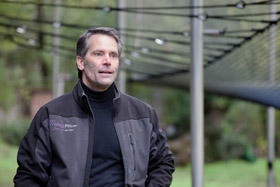 multitude of things. I wanted this business to be about progression, and moving forward onto the next step with a firm foundation in the basic skills, about being proactive and profound. It’s not meant to be a single word.”
multitude of things. I wanted this business to be about progression, and moving forward onto the next step with a firm foundation in the basic skills, about being proactive and profound. It’s not meant to be a single word.”
Kaszuba requires at least three instructors when he teaches a class and has a group of subcontractors he calls on to teach the skills required. “It’s not a very large group of people, because I wanted instructors who people, would regard as being engaged and trustworthy, who have warmth and are invested. The people I have now work well with that philosophy,” he says.
While flying trapeze is Trapeze Pro’s main focus, classes also include aerial arts such as trapeze, double trapeze, swinging trapeze, aerial silks, Spanish web and aerial hoops. Other activities offered include Russian bar, trampoline, aerial bungee, juggling, stilt walking, unicycling and hand balancing acrobatics. Students are welcome to drop in and there’s no membership necessary.
“I love the trapeze because it allows for full body engagement,” says Kaszuba. “And anyone can do the trapeze.” To prove his point, Kaszuba lists off statistics of some of his more remarkable trapeze students. His oldest participant was 88 years old, the heaviest 405 pounds and the tallest was 7 feet, 2 inches tall. Kaszuba has instructed blind students, deaf students, students with missing limbs and more students who are normally confined to a wheelchair than he can count.
Kaszuba says that the best part of teaching trapeze is how therapeutic it is for his students. “When people get up there, their true personality comes out. You can’t hide anything. Then you see the freedom and empowerment it gives them as a result. That’s the reason I love doing this.”
Whatever your fitness interests, or your skill level, one thing is certain; anyone can find the perfect activity for them in the North Bay.




